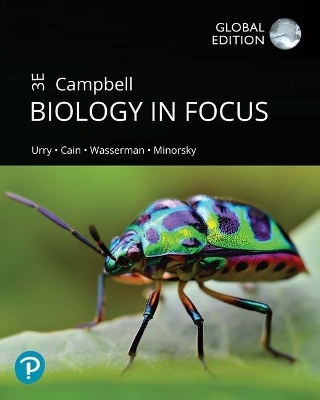
Nanotechnology Horizons in Food Process Engineering
Apple Academic Press Inc.
978-1-77491-064-1 (ISBN)
Although nanotechnology has revolutionized fields such as medicine, genetics, biology, bioengineering, mechanics, and chemistry, its increasing application in the food industry is relatively recent in comparison. Nanotechnology is being used to discover new methods for creating new flavors, extending food shelf life, and improving food protection and nutritional value. Nanotechnology in the food industry is now being explored for intelligent nutrient delivery systems, "smart" foods, contaminant detection nanodevices and nanosensors, advanced food processing, antimicrobial chemicals, encapsulation, and green nanomaterials.
This new three-volume set, Nanotechnology Horizons in Food Process Engineering, addresses a multitude of topical issues and new developments in the field. Volume 1 focuses food preservation, food packaging and sustainable agriculture, while Volume 2 looks at nanotechnology in food process engineering, applications of biomaterials in food products, and the use of modern nanotechnology for human health. The third volume explores the newest trends in nanotechnology for food applications and their application for improving food delivery systems. Together, these three volumes provide a comprehensive and in-depth look at the emerging status of nanotechnology in the food processing industry, explaining the benefits and drawbacks of various methodologies that will aid in the improvement and development of food product sourcing and food hygiene monitoring methods.
Volume 1 discusses emerging nanotechnolgical applications in food processing, packaging, and preservation. It focuses on using nanoparticles for safe and nutritional food production, protecting crops from pests, increasing nutritional value, and providing solutions for various environmental issues. This book especially deals with nanotechnology for controlling plant pathogens, food packaging and preservation, agricultural productivity, wastewater treatment, and bioenergy production.
Volume 2 discusses nanotechnology use in non-thermal techniques such as high-pressure processing (HPP), pulsed electric fields (PEFs), pulsed light, ultraviolet, microwave, ohmic heating, electrospinning, and nano- and microencapsulation. This volume looks at the role and application of minimal processing techniques such as ozone treatment, vacuum drying, osmotic dehydration, dense phase carbon dioxide treatment, and high-pressure assisted freezing. The successful applications of nanotechnologies on juices, meat and fish, fruits and vegetable slices, food surface, purees, milk and milk products, extraction, drying enhancement, and encapsulation of micro-macro nutrients are also considered. The volume also presents several computer-aided techniques that are emerging in the food processing sector, such as robotics, radio frequency identification (RFID), three-dimensional food printing, artificial intelligence, etc. Significant role of food properties in design of specific food and edible packaging films have been elucidated.
Volume 3: Trends, Nanomaterials and Food Delivery provides an overview of the current trends in nanotechnology for food applications and food delivery systems. Topics include a collection of chapters on diverse topics, including the stability of nanoparticles in food, nanobiosensing for the detection of food contaminants, nanotechnology applications in agriculture, the role of nanotechnology in nutrient delivery, how nanotechnology is applied in dairy products, biofunctional magnetic nanoparticles in food safety, the development of nutraceuticals using nanotechnological tools, and more.
Megh R. Goyal, PhD, PE, is a Retired Professor in Agricultural and Biomedical Engineering from the General Engineering Department in the College of Engineering at the University of Puerto Rico.
VOLUME 1: FOOD PRESERVATION, FOOD PACKAGING, AND SUSTAINABLE AGRICULTURE PART I: NANOTECHNOLOGY APPLICATIONS IN FOOD PRODUCTS 1. Scope of Nanotechnology for Food Preservation 2. Emerging Nanotechnology for Food Preservation 3. Role of Nanomaterials for Food Processing and Preservation 4. Potential of Polysaccharide Nanoparticles in Foods PART II: NANOTECHNOLOGY APPLICATIONS IN FOOD PRESERVATION AND PACKAGING 5. Novel Methods in Nanotechnology for Food Preservation 6. Potential of Polymer Nano-Blends in Food Packaging 7. Role of Inorganic Fillers in Nanocomposites for Food Packaging 8. Nanoformulation: A Promising Approach towards Food Fortification PART III: NANOTECHNOLOGY APPLICATIONS IN SUSTAINABLE AGRICULTURE 9. Scope of Plant-Based Nanoparticles as Antibacterial and Antibiofilm Agents 10. Antibacterial Activity of Neem Nanoparticles on Fabrics 11. Role of Nanomaterials for Removal of Biomaterials and Microbes from Wastewater VOLUME 2: SCOPE, BIOMATERIALS, AND HUMAN HEALTH PART I: SCOPE OF NANOTECHNOLOGY IN FOOD PROCESS ENGINEERING 1. Scope of Metal Chalcogenide Nanomaterials in Food Processing Technologies 2. Flavan-3-Ols Research: From Chemistry to Nano Medicine 3. Potential of Carbon Nanotubes for Green Applications PART II: APPLICATIONS OF BIOMATERIALS IN FOOD PRODUCTS 4. Nanotechnology for Cereal-Based Food Products 5. Nanostructure Materials for Food Enrichment and Fortification 6. Applications of Nanomaterials in Food Packaging Systems 7. Recent Advances in Nano/Micro-Emulsion Delivered Curcumin: A Focus on Improved Anticancer and Antioxidant Responses 8. Edible Nanoemulsion Coating Materials: Potential in Fresh Fruits and Vegetables PART III: MODERN NANOTECHNOLOGY FOR HUMAN HEALTH 9. Scope of Nanotechnology in Human Health 10. Nanotechnology Applications in Biological Engineering: Plant Health Management VOLUME 3: TRENDS, NANOMATERIALS, AND FOOD DELIVERY PART I: CURRENT TRENDS IN NANOTECHNOLOGY FOR FOOD APPLICATIONS 1. Stability and Fate of Nanoparticles in Foods 2. Nano-Biosensing for Detection of Food Contaminants PART II: INNOVATIVE TECHNOLOGIES IN NANOMATERIALS FOR FOOD APPLICATIONS 3. Nanotechnology Applications in Agriculture 4. Postharvest Physiology, Value Chain Advancement, and Nanotechnology in Fresh-Cut Fruits and Vegetables 5. Role of Nanotechnology in Nutrient Delivery 6. Implications of Nanotechnology in Food Packaging 7. Applications of Nanotechnology in the Dairy Industry PART III: 8. Antimicrobial Nanoparticles: Production, Mechanism of Action, and Applications in the Food Sector 9. Nanoencapsulation of Bioactive Compounds 10. Development of Nutraceuticals Using Nanotechnological Tools: Current Scenario and Future Prospects 11. Potential of Biofunctional Magnetic Nanoparticles in Food Safety: Detection of Toxins and Foodborne Pathogens
| Erscheint lt. Verlag | 10.3.2023 |
|---|---|
| Reihe/Serie | Innovations in Agricultural & Biological Engineering |
| Zusatzinfo | 67 Illustrations, color; 39 Illustrations, black and white |
| Verlagsort | Oakville |
| Sprache | englisch |
| Maße | 156 x 234 mm |
| Gewicht | 2576 g |
| Themenwelt | Naturwissenschaften ► Biologie |
| Technik ► Lebensmitteltechnologie | |
| Technik ► Umwelttechnik / Biotechnologie | |
| ISBN-10 | 1-77491-064-0 / 1774910640 |
| ISBN-13 | 978-1-77491-064-1 / 9781774910641 |
| Zustand | Neuware |
| Haben Sie eine Frage zum Produkt? |
aus dem Bereich


